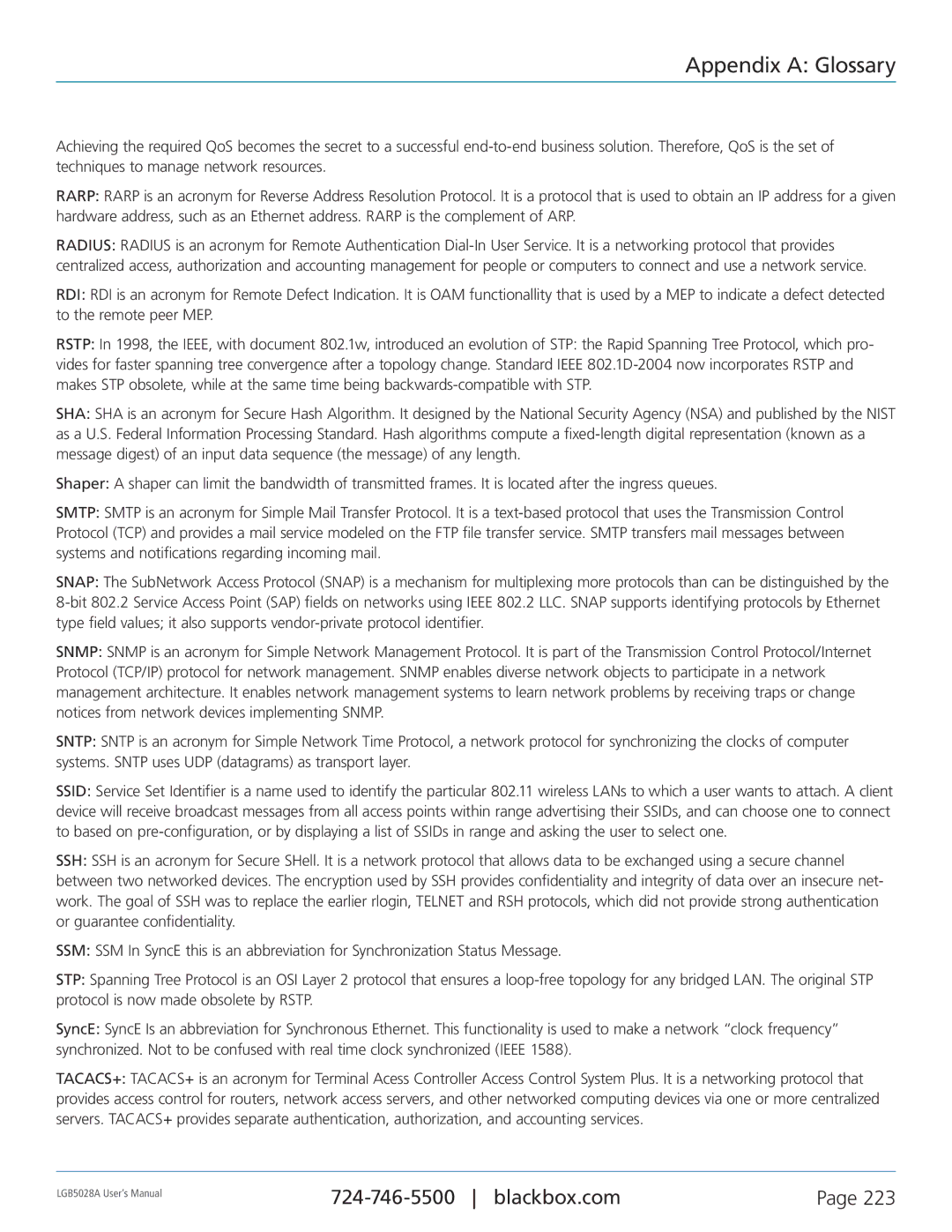
Appendix A: Glossary
Achieving the required QoS becomes the secret to a successful
RARP: RARP is an acronym for Reverse Address Resolution Protocol. It is a protocol that is used to obtain an IP address for a given hardware address, such as an Ethernet address. RARP is the complement of ARP.
RADIUS: RADIUS is an acronym for Remote Authentication
RDI: RDI is an acronym for Remote Defect Indication. It is OAM functionallity that is used by a MEP to indicate a defect detected to the remote peer MEP.
RSTP: In 1998, the IEEE, with document 802.1w, introduced an evolution of STP: the Rapid Spanning Tree Protocol, which pro- vides for faster spanning tree convergence after a topology change. Standard IEEE
SHA: SHA is an acronym for Secure Hash Algorithm. It designed by the National Security Agency (NSA) and published by the NIST as a U.S. Federal Information Processing Standard. Hash algorithms compute a
Shaper: A shaper can limit the bandwidth of transmitted frames. It is located after the ingress queues.
SMTP: SMTP is an acronym for Simple Mail Transfer Protocol. It is a
SNAP: The SubNetwork Access Protocol (SNAP) is a mechanism for multiplexing more protocols than can be distinguished by the
SNMP: SNMP is an acronym for Simple Network Management Protocol. It is part of the Transmission Control Protocol/Internet Protocol (TCP/IP) protocol for network management. SNMP enables diverse network objects to participate in a network management architecture. It enables network management systems to learn network problems by receiving traps or change notices from network devices implementing SNMP.
SNTP: SNTP is an acronym for Simple Network Time Protocol, a network protocol for synchronizing the clocks of computer systems. SNTP uses UDP (datagrams) as transport layer.
SSID: Service Set Identifier is a name used to identify the particular 802.11 wireless LANs to which a user wants to attach. A client device will receive broadcast messages from all access points within range advertising their SSIDs, and can choose one to connect to based on
SSH: SSH is an acronym for Secure SHell. It is a network protocol that allows data to be exchanged using a secure channel between two networked devices. The encryption used by SSH provides confidentiality and integrity of data over an insecure net- work. The goal of SSH was to replace the earlier rlogin, TELNET and RSH protocols, which did not provide strong authentication or guarantee confidentiality.
SSM: SSM In SyncE this is an abbreviation for Synchronization Status Message.
STP: Spanning Tree Protocol is an OSI Layer 2 protocol that ensures a
SyncE: SyncE Is an abbreviation for Synchronous Ethernet. This functionality is used to make a network “clock frequency” synchronized. Not to be confused with real time clock synchronized (IEEE 1588).
TACACS+: TACACS+ is an acronym for Terminal Acess Controller Access Control System Plus. It is a networking protocol that provides access control for routers, network access servers, and other networked computing devices via one or more centralized servers. TACACS+ provides separate authentication, authorization, and accounting services.
LGB5028A User‘s Manual | Page 223 | |
|
|
